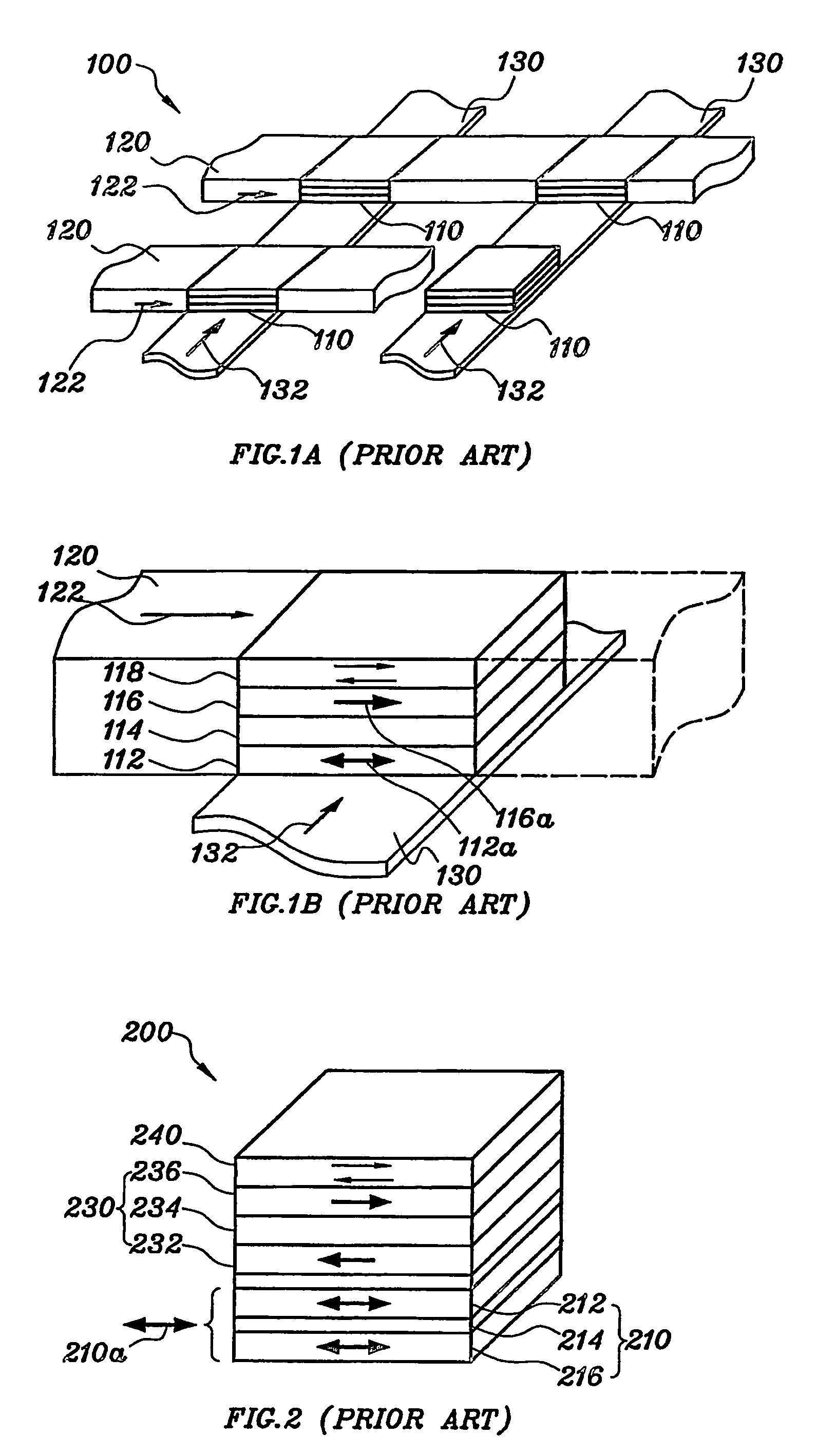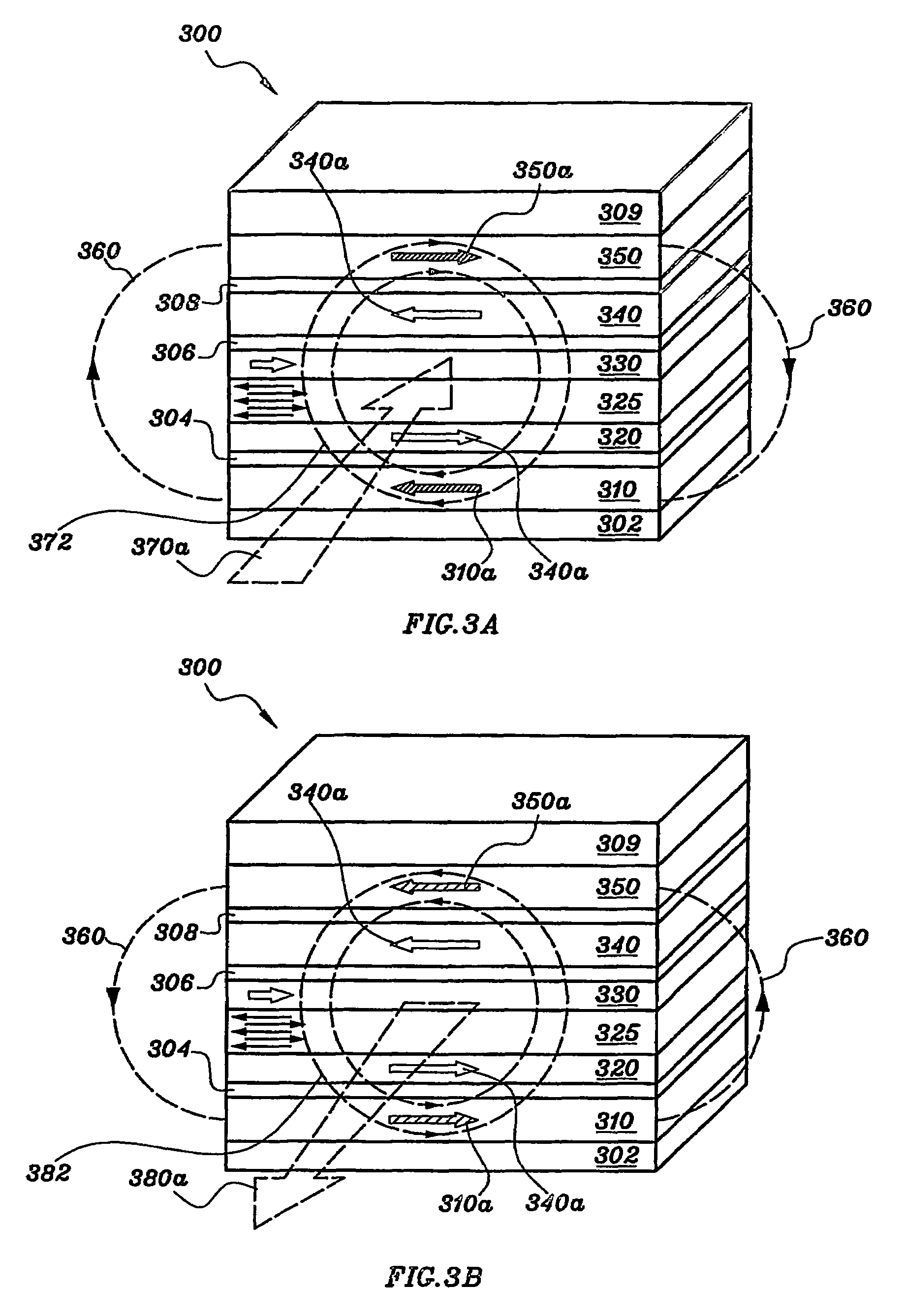Magnetic memory device
a memory device and magnetic field technology, applied in the field of magnetic memory devices, can solve the problems of data recording errors, thermal unstability of the memory device, and affecting the stability of the magnetic field of the first, and achieve the effect of reducing the static magnetic field of the memory devi
- Summary
- Abstract
- Description
- Claims
- Application Information
AI Technical Summary
Benefits of technology
Problems solved by technology
Method used
Image
Examples
Embodiment Construction
[0035]As shown in FIGS. 3A and 3B, a memory cell 300 for a magnetic memory device according to one embodiment of the present invention comprises a template layer 302, a first free layer 310, a first non-magnetic layer 304; a first ferromagnetic layer 320, an antiferromagnetic layer 325, a second ferromagnetic layer 330, a second non-magnetic layer 306, a third ferromagnetic layer 340, a third non-magnetic layer 308, a second free layer 350 and a cap layer 309. The above layers are disposed in sequence, and the first and third ferromagnetic layers 320 and 340 are disposed between the two free layers 310 and 350, as shown in FIG. 3A.
[0036]In this structure, the two ferromagnetic layers 320 and 340 serve as the pinned layer, and the two free layers 310 and 350 are the record layers with their initial magnetization anti-parallelly oriented. The two free layers 310 and 350 are magnetostatically coupled to each other to form a flux-closure 360.
[0037]In the embodiment shown in FIG. 3A, whe...
PUM
 Login to View More
Login to View More Abstract
Description
Claims
Application Information
 Login to View More
Login to View More - R&D
- Intellectual Property
- Life Sciences
- Materials
- Tech Scout
- Unparalleled Data Quality
- Higher Quality Content
- 60% Fewer Hallucinations
Browse by: Latest US Patents, China's latest patents, Technical Efficacy Thesaurus, Application Domain, Technology Topic, Popular Technical Reports.
© 2025 PatSnap. All rights reserved.Legal|Privacy policy|Modern Slavery Act Transparency Statement|Sitemap|About US| Contact US: help@patsnap.com



